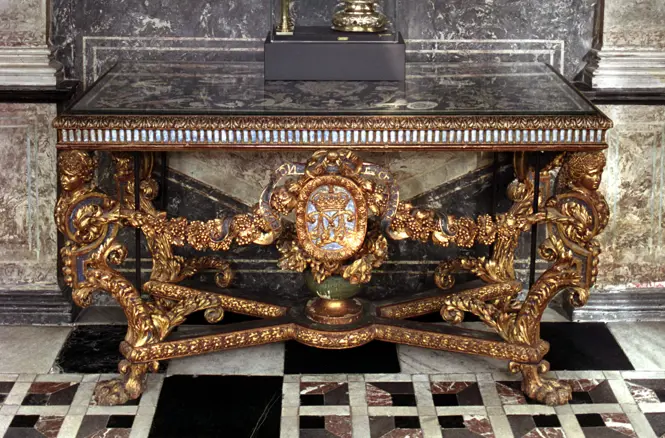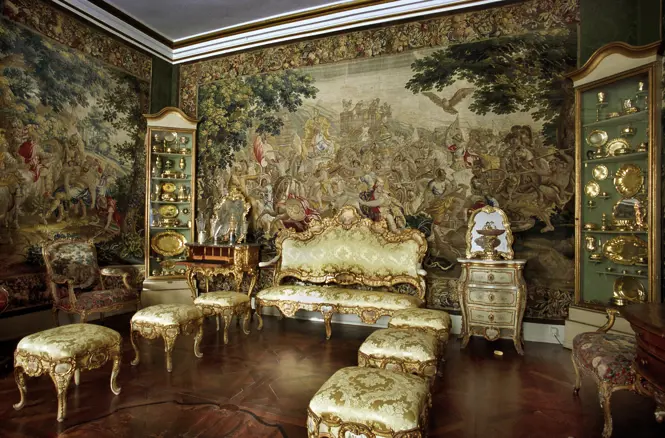
At the royal palaces, there is a wide range of furniture which represents time periods from the Baroque to the modern era.
The royal furniture collection is closely connected with the royal palaces and their architecture. The same architects who were the masterminds of the buildings also often played a role in the design of the interiors, such as the stucco on the ceilings, the colours of the panels, the coverings on the walls, the drapes over the windows and the furniture in all of the chambers. Most of the pieces of furniture at the royal palaces became state property in connection with the abolishment of the absolute monarchy in 1849. Other pieces of furniture are owned by the Danish Royal Property Trust, while the remainder is the royal family’s private property.
Despite changing tastes in changing periods and despite large fires and the normal deterioration of materials, the royal furniture collection nevertheless amounts to more than 15,000 pieces of furniture. Among other things, the furniture includes large, purely decorative furniture pieces from the 1600s with inlaid biblical scenes, and functional pinewood folding tables produced by one of the 1700s’ many anonymous skilled joiners. The collection also contains thrones and furniture for sitting on, such as night-stools and bidets.
The collection of Chinese furniture from the mid-1700s bears witness to dreams of distant lands. The dream also left its mark on the fashion of the time and has now left a considerable footprint at Fredensborg Palace, where one of Europe’s finest collections of Chinese lacquered furniture from the period is located. The colonial period in the West Indies is also noticeable in the interior decoration of the royal chambers, among other things through mahogany furniture and through around 250 pieces of furniture that, upon the sale of the Danish West Indies Islands in 1917, were sent home to Copenhagen and became part of the furnishings of the royal palaces in the following years.
With great inspiration from English cabinetmakers’ workshops in the period around 1800, Denmark, for the first time in history, achieved a level of craftsmanship during the 20th century which compared favourably with that of foreign lands. Det Kongelige Meubel-Magazin and the establishment of various schools of draughtsmanship along with further development of a close collaboration between architects and master joiners had an influence on the tradition that resulted in a string of modern classics afterwards.
The Royal House’s workshop handles all of the furniture that enters into the everyday interior decoration of the palaces. The workshop has several skilled joiners, a painter, a seamstress, and an upholsterer who is continuously in charge of restoration and reupholstery tasks. The workshop also produces new furniture based on the old craft traditions and continues to cherish the pieces of furniture and their tradition as well as the craftsmanship behind them. The workshop is located behind Christian VIII’s Palace, Amalienborg.

